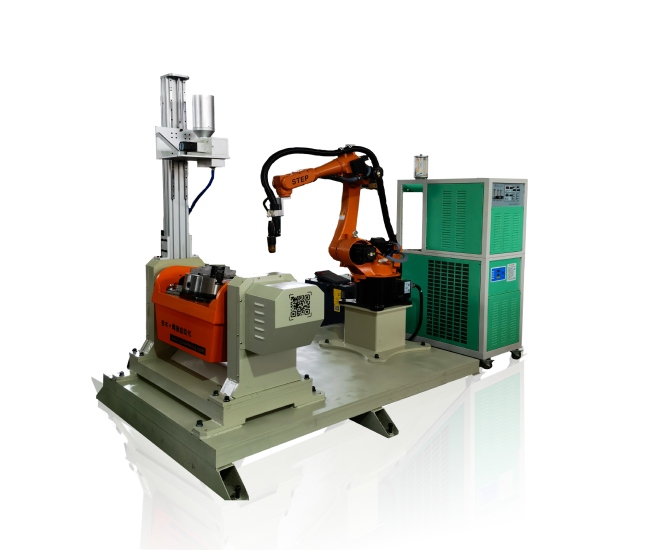Robotic Hardfacing Machine|PTA Welding Robot
Innovation in welding continues to evolve, with robotic surface hardening and plasma powder cladding technologies demonstrating the latest advancements. These machines offer a range of features and capabilities that will revolutionize the industry.
The robotic hardfacing welding machine combines a robotic arm with a 600kg welding positioner that can rotate 360°. This machine adopts programmable control and can perform surface coating repair on various special-shaped parts and conventional parts. Additionally, it offers enhanced plasma surface treatment. The machine's versatility increases production efficiency and saves processing time.
One of the main features of CNC welding machines is their versatility. By equipping it with the appropriate degrees of freedom according to the job task requirements, it is fully capable of handling most operations. It also has high reliability, high speed and high precision, further improving production efficiency and saving processing time. With its flexibility and multi-purpose features, one machine can be used for many purposes. In addition, it ensures safe and reliable operation due to its repeatable programmability.
Robotic cladding and PTA welding machines can be used in harsh and dangerous environments to ensure stable work quality, thereby improving overall product quality. This makes them ideal for various industries that require the highest precision and durability.
One of the applications of the plasma powder cladding process is the manufacture of mining equipment[1] , bottle molds, valve seats[2] and the repair of extruder screws[3] or aircraft turbines. The PTA process involves the use of two independent, individually adjustable arcs. In this process, a pilot arc is ignited between a non-melting tungsten electrode and a plasma nozzle, which accelerates the plasma gas (usually argon or helium) and ignites the main arc between the electrode and the workpiece. As a result, the workpiece melts and the added metal powder liquefies, covering the workpiece as a protective layer.
To further improve the plasma powder cladding process, we developed automated equipment to ensure accuracy and efficiency. This technological advancement has proven beneficial in complex applications and contributes to overall improvements in product quality.
With the introduction of these robotic cladding and PTA welding machines, the welding industry will achieve higher levels of productivity, efficiency and quality. The advanced features, flexibility and ability of these machines to work in harsh environments make these machines a valuable asset to various industries. The plasma powder cladding process, aided by automated equipment, further increases the precision and versatility of these machines. As the welding industry continues to develop, these new technologies will surely shape the future of welding.
Post time: Nov-23-2023

